I am now back on the peaceful, lush, and rainy farm in Ecuador. My experience backpacking in Colombia was incredible, and I’m very sorry the trip was so short. I’ll have to stay longer next time. I can’t say I’m an expert on Colombia travel yet, but there are some notable differences between traveling in Colombia and Ecuador.
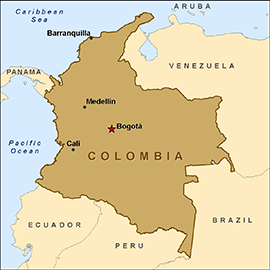
Money: The currency is Colombian pesos. Currently, there are between 2200 to 2400 pesos to one American dollar. Have fun converting that in your head. Counterfit bills are also a thing. I’m not expert at this, but you can apparently tell the difference by the texture of the paper and rubbing the bill on a sheet of paper. If some of the ink smears off, the bill is supposed to be legitimate.
Getting around: Bussing from city to city is more expensive in Colombia than Ecuador. However, some bartering is possible. I would show up at the bus terminal, ask how much a ticket costs at one bussing company, and when it was too expensive move onto the next company. Usually at least one company will be willing to drop their prices (I paid 45,000 pesos instead of 60,000 on my way from Medellin to Bogota) (am I still getting ripped off?).
Once I arrived in a new city, the first thing I would hit up was the tourist information desk. Cali, Medellin, and Bogota all had tourist information kiosks conveniently located right in the bus terminal where free tourist maps are available. They will also help you find a hostel and point you in the right direction to get there.
If you don’t feel like bussing, flying is not a bad idea. Viva Colombia Airlines offer very cheap flights within the country and to Quito, Lima, and Panama City (about 20$ from Cali to Medellin, 100$ from Bogota to Quito, plus additional charges for silly things like having luggage). This airline is very cheap, but I warn that you are not paying for top-notch service. Their website is frequently flawed, and as a result I accidentally bought two of the same plane ticket (and am still in the process of working out my refund).
Plan Colombia: This segment isn’t travel advice, but it’s a topic that not enough people know about. I can say that because the Graffiti Tour guide (a local) told us to look it up, educate ourselves, and talk about it. I don’t think I’ve ever been known to get political, but for this topic I read the wiki article, watched a documentary, and talked to a Yale expert just so that I wouldn’t berrate you with false information and an uninformed opinion. This issue may be of particular concern if you are an American who paid taxes between 1996 and 2006, as this is where your money may have gone. Now please excuse my best attempt at breaking down a very complex issue:
Plan Colombia was a United Stated initiative aimed at fighting the cocaine industry and pacifying left-wing geurilla warfare. The plan was first conceived in 1996 between Colombian President Andrés Pastrana Arango and President Bill Clinton. The original Clinton administration pledged 1.3 billion to this cause. In the original plan, a majority of funds were dedicated to social and economic development, with only 32% dedicated to militarily fighting the drug trade. This all sounds good and well, except the plan turned highly militarized and lots of people died while the cocaine industry still stands strong.
So what went wrong?

Money matters– The majority of funds were initially intended for social and economic development; for instance, programs that would help peasant farmers of coca make a profit from growing alternative crops. Instead, nearly all American funding went into military spending which had some terribly adverse effects and lots of the money ended up in the wrong hands (see next paragraph). Additionally, a study carried out by RAND (thinktank of economists and mathematicians) suggests that domestic preventative and rehabilitative projects would have been twenty-three times more cost effective in preventing the usage of cocaine than external eradication.
Enabling right-wing paramilitary groups-To understand this issue you have to understand that much conflict exists between the right wing paramilitary and left-wing geurilla groups (an age-old conflict, originally of the socialist vs. capitalist nature). American funding went into the Colombian military, which is known to have intimate ties with right-wing paramilitary groups. These groups were ruthless in their abuses to left-wing geurillas and their ‘sympathizers’ (sympathizers in quotations because they’ve been known to kill anyone that doesn’t support their cause, often innocent civilians). As a result of these right-paramilitary and left-geurilla conflicts, 1.5 million civilians have been displaced as refugees and thousands of other have been killed.
Got oil? Many critics claim that the exploitation of oil was always on the agenda behind Plan Colombia. Left wing geurilla groups are a threat to the security of oil extraction and defeating them would open markets for free trade in Colombia.
Aerial Eradiction– The U.S. also sprayed large swathes of coca producing territory with glyphosate (aka Roundup Ultra, produced by our favourite company Monsanto). This had damaging effects on the livelihoods of peasant farmers (destroying many food staple crops along with the coca) as well as adverse health effects for those exposed. Not to mention it probably didn’t do the environment well either. Many also agree that destroying a portion of the cocaine supply ultimately has negligible effects on cocaine usage in America. If there is demand, there will be a supply.


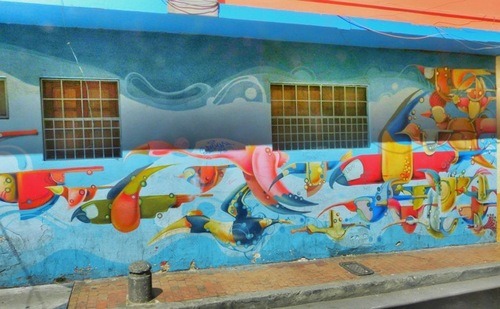


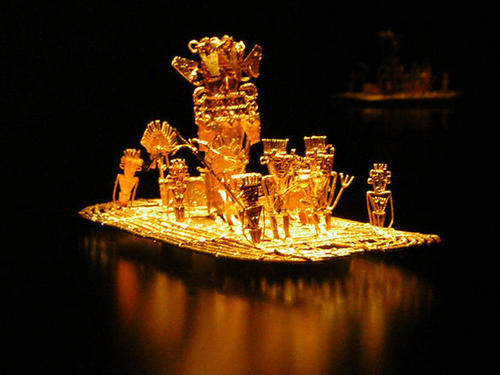
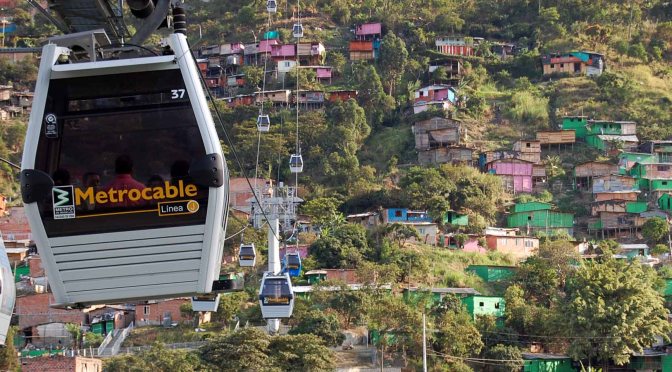





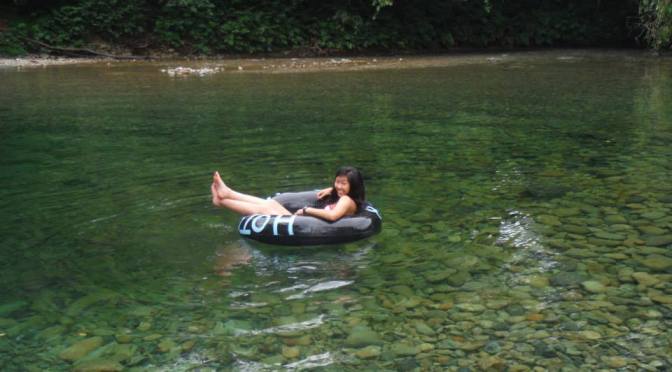

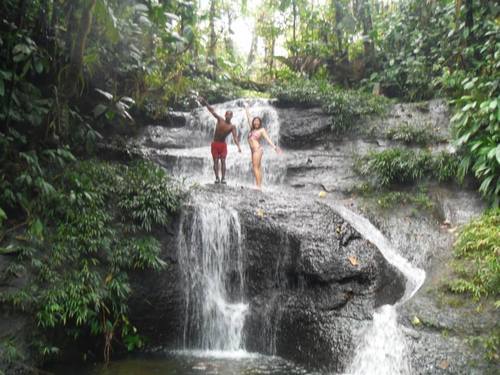




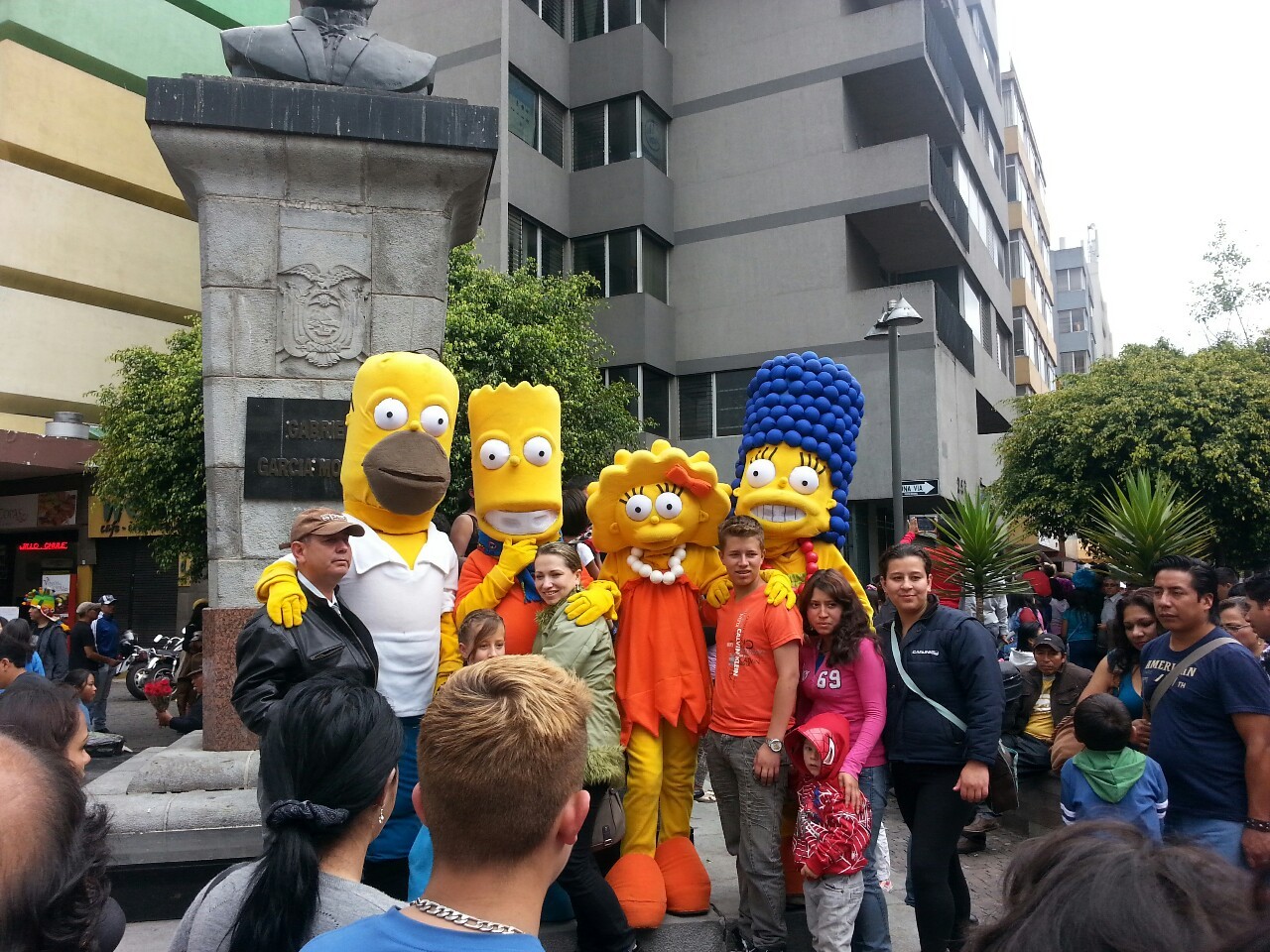



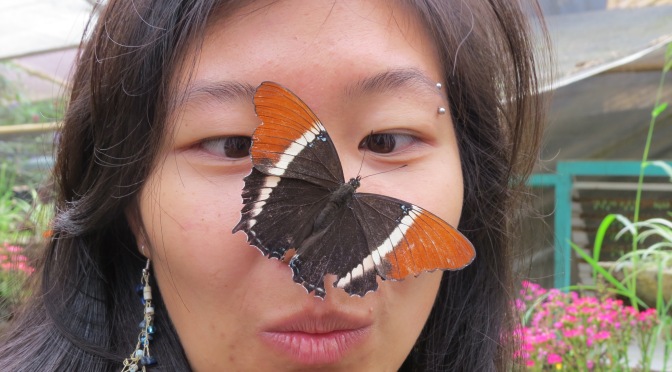




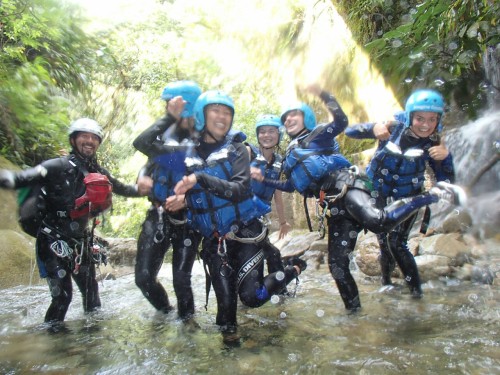 Fig. 1. A fine group of intrepid canyoners. That evening when we arrived back in Baños we were exhausted (and also stuck in traffic for 2 hours). To commemorate my quarter life crisis and as a spur of a moment activity, I got an eyebrow piercing followed by a banana split. I´m not certain the piercing was a wise decision or that I am particularly fond of it. Luckily it is not a tattoo and I can take it out when I return to civilization and have to see myself in a mirror again. The banana split was fantastic. The next morning I got to experience the famous steam baths of Baños. This service was offered at my hostel for 4$. They put you in a wooden box with your head sticking out and have your body in a sauna with some pleasant smelling vegetation. Then they have you come out and wash yourself down with a cold, wet, towel. This hot-cold process repeats this way about five times. Towards the end of the bathing experience, instead of using a towel, you sit in a kind of ¨water chair¨ and splash yourself. For the last cold cycle, the masseuse sprays you with a small but forceful hose. And then you emerge a new person.
Fig. 1. A fine group of intrepid canyoners. That evening when we arrived back in Baños we were exhausted (and also stuck in traffic for 2 hours). To commemorate my quarter life crisis and as a spur of a moment activity, I got an eyebrow piercing followed by a banana split. I´m not certain the piercing was a wise decision or that I am particularly fond of it. Luckily it is not a tattoo and I can take it out when I return to civilization and have to see myself in a mirror again. The banana split was fantastic. The next morning I got to experience the famous steam baths of Baños. This service was offered at my hostel for 4$. They put you in a wooden box with your head sticking out and have your body in a sauna with some pleasant smelling vegetation. Then they have you come out and wash yourself down with a cold, wet, towel. This hot-cold process repeats this way about five times. Towards the end of the bathing experience, instead of using a towel, you sit in a kind of ¨water chair¨ and splash yourself. For the last cold cycle, the masseuse sprays you with a small but forceful hose. And then you emerge a new person.  Fig. 2. Steam baths. Later that day we also visited the hot springs. These were not quite up to first world expectations and we all had to wear silly little caps like Smurfs. Mine was florescent pink. Only children got florescent pink caps. I also had some guinea pig for lunch. I can´t say very many good things about it. The taste is fine, but it is about 20% actual meat and 80% bones, skin, and odd rubbery bits.
Fig. 2. Steam baths. Later that day we also visited the hot springs. These were not quite up to first world expectations and we all had to wear silly little caps like Smurfs. Mine was florescent pink. Only children got florescent pink caps. I also had some guinea pig for lunch. I can´t say very many good things about it. The taste is fine, but it is about 20% actual meat and 80% bones, skin, and odd rubbery bits. 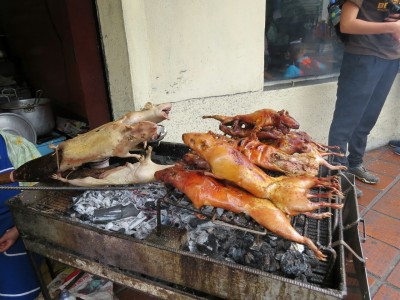 Fig 3. Roasting piggies. Thank you for reading about my adventures in Baños! Otavalo and life at the reserve to follow!
Fig 3. Roasting piggies. Thank you for reading about my adventures in Baños! Otavalo and life at the reserve to follow!